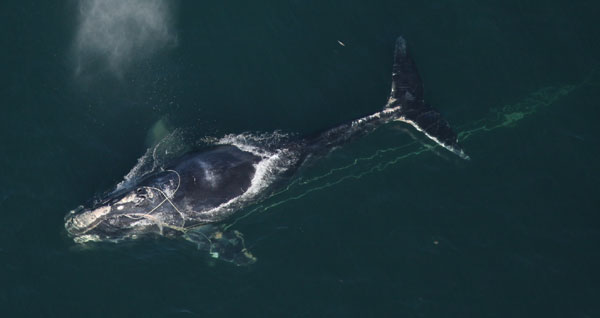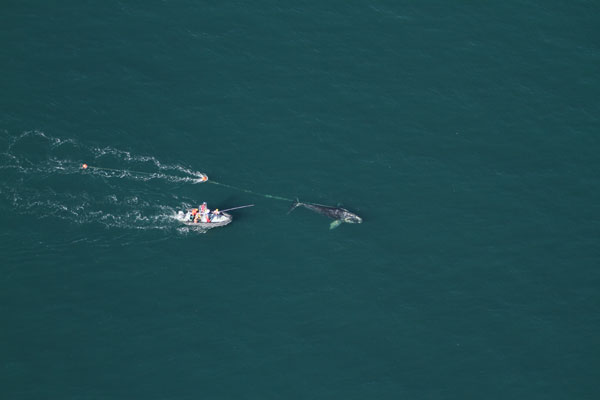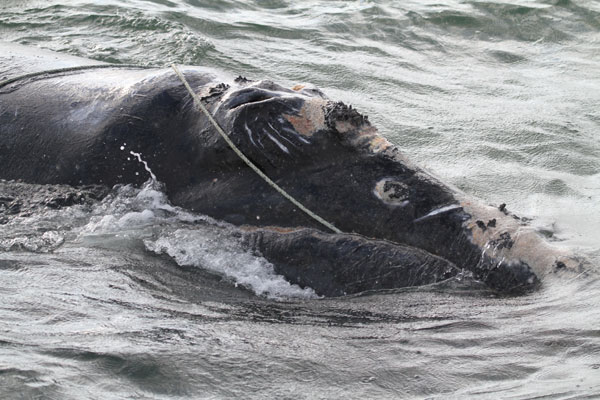Endangered Right Whale Freed from Rope


A team of biologists successfully removed rope that was wrapped around a right whale off the coast of Daytona, Fla., last week, saving its life.
The rope, more than 150 feet (46 meters) long, was wrapped around the whale's head and fins. A team from the Florida Fish and Wildlife Conservation Commission (FWC) first sighted the entangled whale during routine aerial surveys designed to spot right whales at their calving grounds (where they give birth) off the coasts of Georgia and northeast Florida.
Right whales spend their summers feeding off the New England and Canadian coasts, then migrate to the Southeast waters to give birth to their calves from mid-November through mid-April.
"We were very concerned about this whale as the entangling ropes appeared to be life- threatening," said Jamison Smith, of the National Oceanic and Atmospheric Administration's (NOAA) Fisheries Service.
The entangled whale is estimated to be about 30 feet (9 meters) long and was born during the 2008 2009 calving season. Before this most recent spotting, it was last observed gear-free by aerial survey teams off Florida's northeast coast in February 2010.
Immediately after spotting the whale, an FWC team of scientists responded in order to further assess the severity of the entanglement and the physical condition of the whale.
Disentangling a right whale takes a great deal of planning, expertise and coordination among agencies. Because of the speeds at which the animals move and the distances they travel, it can take days or even weeks to safely free an entangled whale.
Get the world’s most fascinating discoveries delivered straight to your inbox.
The disentanglement team was led by the Georgia Department of Natural Resources and consisted of land, sea and air support from NOAA's Fisheries Service, FWC, Wildlife Trust, Provincetown Center for Coastal Studies and the New England Aquarium.
With only 300 to 400 in existence, North Atlantic right whales are among the most endangered whales in the world. They are protected under the U.S. Endangered Species Act and the Marine Mammal Protection Act of 1972. Vessel strikes and entanglement in fixed fishing gear are the two greatest threats to their recovery, with scientists typically documenting one or two entangled right whale cases in the Southeast each year.
Fishing gear removed from whales has come from regions as far away as New England and Canada. The fishing gear removed from this whale included ropes and wire mesh material similar to what is found in traps for fish, crab and lobster along the mid-Atlantic, northeastern United States and Canadian coasts.
The whale is now free, but the NOAA and the FWS plan to keep tabs on it for awhile.
"Given the efforts of the disentanglement team we are optimistic the whale may shed the remaining ropes on its own, so we will continue to monitor its condition via aerial surveys and intervene again if necessary," Smith said.





